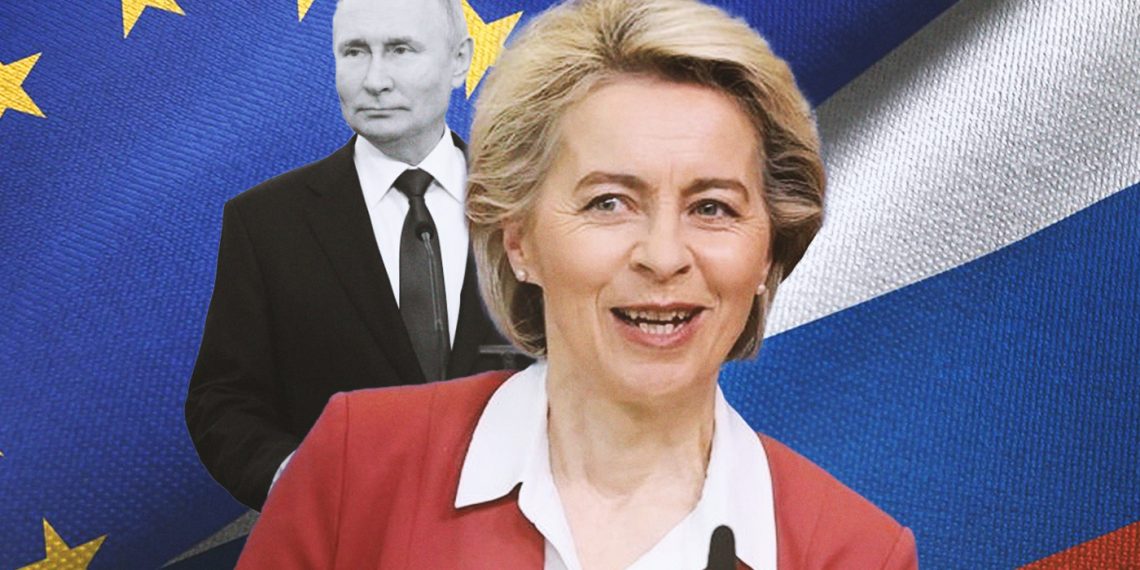In response to Russia is aggression on Ukraine, the EU imposed ten sanctions that drastically reduced imports and exports. This has caused a significant economy shift and necessitated that the Kremlin seek out alternative markets to make up for their loss of one of Europe’s wealthiest blocs.
Russia Becomes the Country With the Most Sanctions
As of February 2022, the EU has blocked €43.9 billion in exports to Russia and a staggering €91.2 billion in imports, as reported by the European Commission. This vastly surpasses pre-war EU-Russia trade figures from 2021, when their total value was estimated at €257.5 billion – now with 49% of exports and 58% of imports under sanctions or restrictions!
In the past, Russia placed fifth in trading partnerships for the bloc, lagging behind China, the United States, The United Kingdom, and Switzerland. Unfortunately, today it is condemned globally as an economic outcast- the most sanctioned country on earth due to its shunning by all Western nations.
EU Sanctions Extend From Military Products to Luxury Goods
The EU has imposed a ban on the exportation of an extensive list of industrial and technological products that are already being used or could potentially be utilized by the Russian military for waging war against Ukraine. This encompasses everything from radars to drones, camouflage gear to cameras, lenses to radio systems, cranes to antennas, trucks, and chemicals that can be used in weapons manufacturing.

In addition to these restrictions, the European Union has prohibited several key exports for modernizing Russia’s economy – semiconductors, quantum computing technology, aircraft components, and banknotes in any of the bloc’s official currencies. Furthermore, Brussels had also imposed a “luxury ban” on high-end EU-made goods sought after by Russian elites, like expensive jewelry, handbags, and perfume priced above €300.
While a range of exports, including pharmaceuticals, soaps and detergents, coffee and tea, toys, plants, and related products, as well as fashion accessories costing less than €300, remain allowed to be exported from the EU. Noteworthy brands like Boggi, Benetton, Calzedonia, Etam, and Lacoste are some notable companies still doing business with Russia.
EU Sanctions Also Covers Imported Products from Russia
The EU has imposed sanctions on Russia, resulting in a staggering economic impact of €91.2 billion worth of Russian goods now banned across the bloc- ranging from coal, gold, iron, and steel to machinery, cement wood, plastics, textiles, footwear, leather, and vehicles. Strikingly enough, even two of Russia’s most sought-after products- vodka and caviar – are also forbidden from entering the European Union market.
Carrying on the tradition of imposing symbolic sanctions, the EU most recently added carbon black and synthetic rubber to its blacklist. The event surprisingly sparked heated debates before it was finally approved in time for their deadline. But none of these measures can measure up to the EU’s restriction against importing Russian crude oil and refined petroleum products which -due to its direct impact on Moscow’s main source of income- is considered a daring move with far-reaching consequences by the bloc itself.
Although the ban featured tailored-made exemptions for pipeline imports, it managed to gradually remove around 90% of EU purchases of Russian oil, estimated to be worth €71 billion in 2021.
You may be interested in: Investors Unsure: A Correction or an End in Bitcoin?













